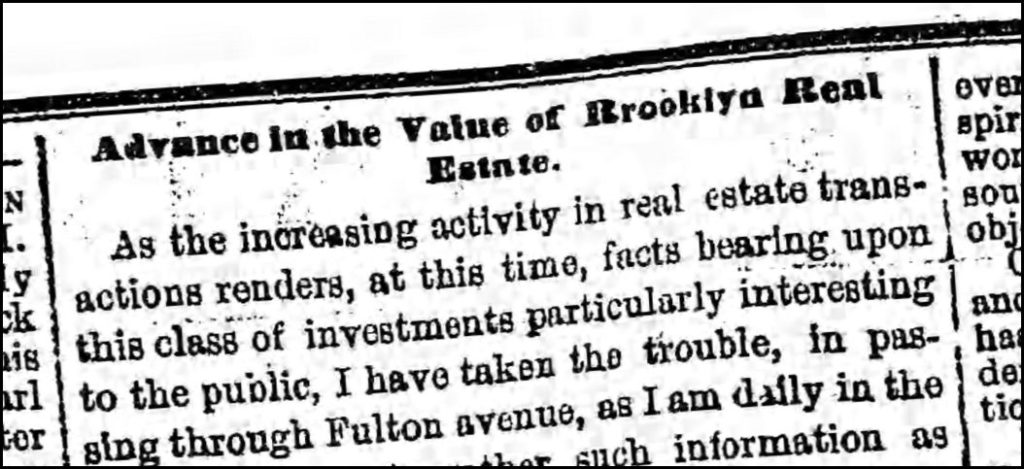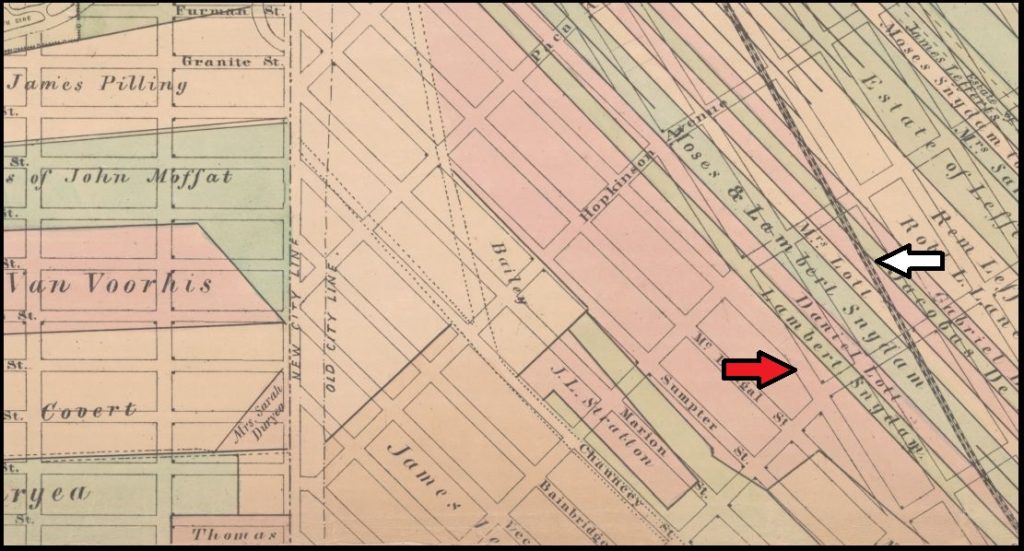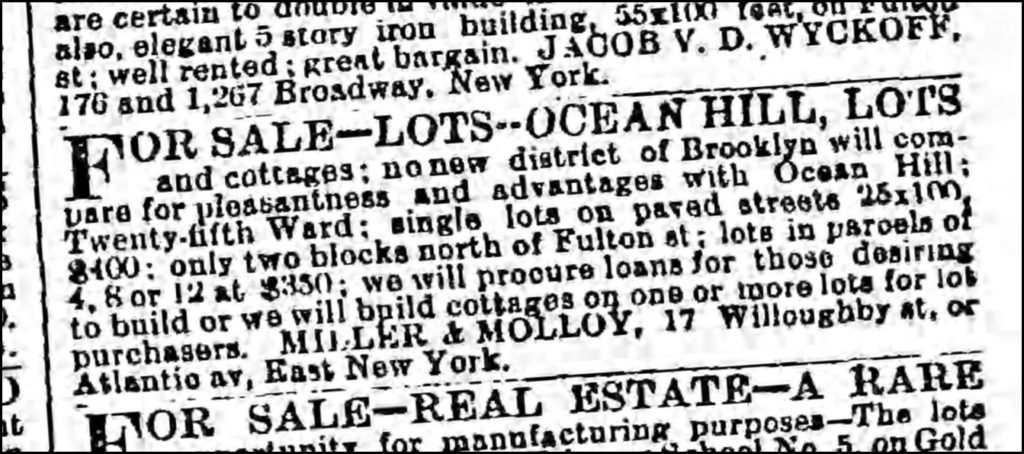THE “IMPOSING” VIEW FROM OCEAN HILL (1848)
Brownstone Detectives investigates the history of our clients’ homes.
The story you are about to read was composed from research conducted in the course of one of those investigations.
Do you know the history of YOUR house?
********************************************************************************************************************************
Before there was Ocean Hill—the Bedford-Stuyvesant neighborhood—there was Ocean Hill—the section of Green-Wood Cemetery. Whether one influenced the other is lost to the ages. What is clear, however, is that both locations got their names from a geographical point from which a body of water could clearly be viewed.

“At this point, now known as Ocean Hill,” described a contributor (whose pen-name, revealingly, was Investment) in an edition of the Brooklyn Daily Eagle published just a few years before the Civil War began, “we have reached the highest point on the avenue (Fulton Street) and the most commanding elevation of ground in the city; and which, for grandeur, beauty and variety of its scenery, cannot be surpassed.
“The ocean view,” Investment continued, “is especially grand and imposing.”
Investment, whose contribution to the paper existed as a thinly veiled promotional piece for Brooklyn, was describing the “advance in the value of Brooklyn real estate.” From Fulton Ferry he advanced down Fulton Avenue to “gather such information as will enable the public to form an intelligent estimate as to the present and prospective value of property on and near this great thoroughfare.”

“At this point Fulton avenue is distant but a few hundred feet from Atlantic avenue on the south, and Broadway on the north; and as there are railroads in each of these leading avenues, all crossing, and I may say, concentrating on Ocean Hill, it is equally convenient for the outgrowth of all portions of the city. Such is the commanding position, and such the rare combination of advantages of this portion of Fulton avenue, that its rapid development with first class improvements is now inevitable.”
“Prior to 1848 this section of land was covered with trees and was known as the Wood Lots,” continued the Eagle. “The property was not considered of much value, because of its broken character. There were high hills and deep gulches, some of which were filled with ponds. Those who owned the land did not deem it worth while to improve it.”
One such investor, H. D. Aldrich, a wealthy retired dry goods merchant of New York, who had turned his attention to real estate investments in Brooklyn, purchased 500 lots in the late 1840s. Although he would pass away before he could improve the area, it was due to his personal interest in the section of Brooklyn that it was given its name so early on.

“One morning shortly after purchasing the property Mr. Aldrich was walking over it. As he reached the highest part, corner of Hopkinson and Fulton streets, the ocean suddenly burst upon his view. It was a grand sight, and, with an exclamation of delight, he said he would call the property Ocean Hill. So appropriate is the title that it has adhered to the hill ever since.”
By 1884, however, due in large part to the Civil War and then the decade long Panic of 1873, an extreme economic slump through which the city of Brooklyn had just passed—the effect of which was the bursting of a real estate bubble—causing depressed property prices and mass unemployment. Development in Ocean Hill, as a result, noticeably dropped off during this entire period.
Now, as the newspaper report stated, with an upward tick in the economy and a building boom then taking place, Ocean Hill was noticeably back.
“Until the past year the property interests of this part of the city have lain dormant,” noted a story in an 1884 edition of the Eagle.
“But now they have shaken off the lethargy, and rows of houses are everywhere springing into existence, like the palace that was conjured up by the slaves of Aladdin’s wonderful lamp.”
If the writer may have implied, though, that Ocean Hill, was a Garden of Eden simply waiting for the construction of rowhouses, there is evidence to suggest that the area, although graced with a peak that offered uninterrupted views to the ocean, was more of a rustic outback replete with a challenging geographical environment.
———————————————————————————————————————–
 Brownstone Detectives is an historic property research agency. Our mission is to document and save the histories of our clients’ homes. From our research, we produce our celebrated House History Books and House History Reports. Contact us today to begin discovering the history of your home.
Brownstone Detectives is an historic property research agency. Our mission is to document and save the histories of our clients’ homes. From our research, we produce our celebrated House History Books and House History Reports. Contact us today to begin discovering the history of your home.